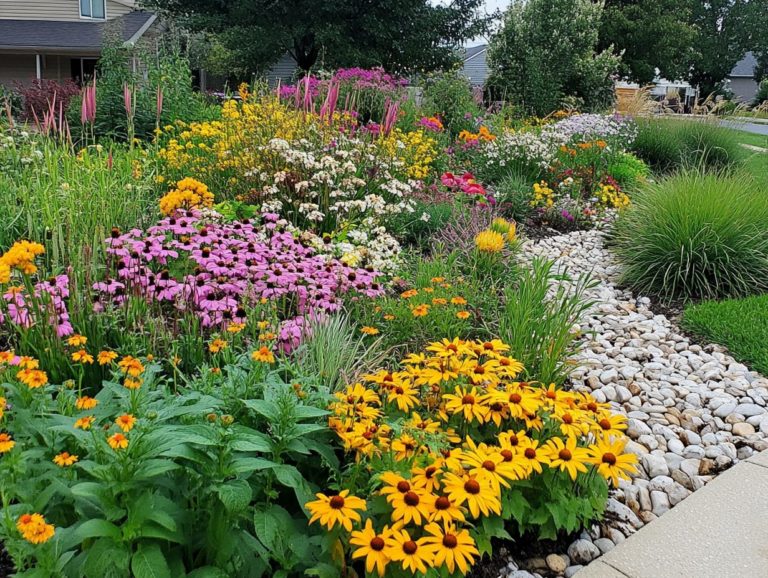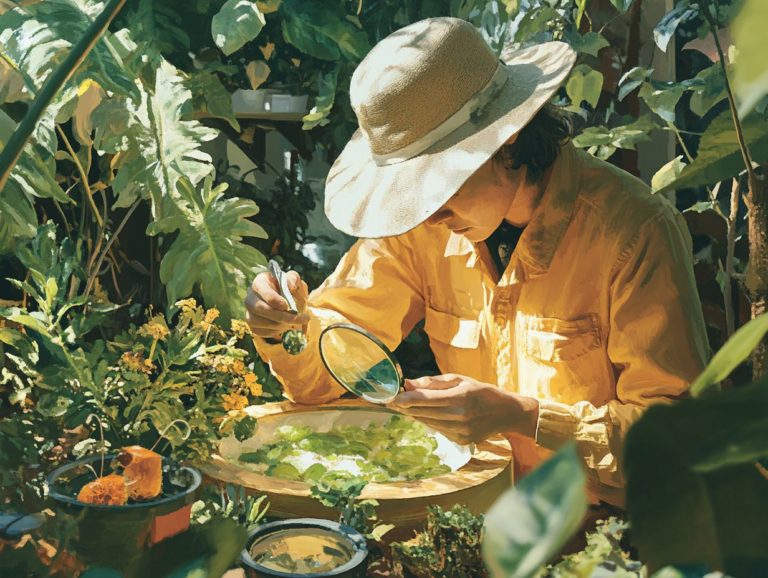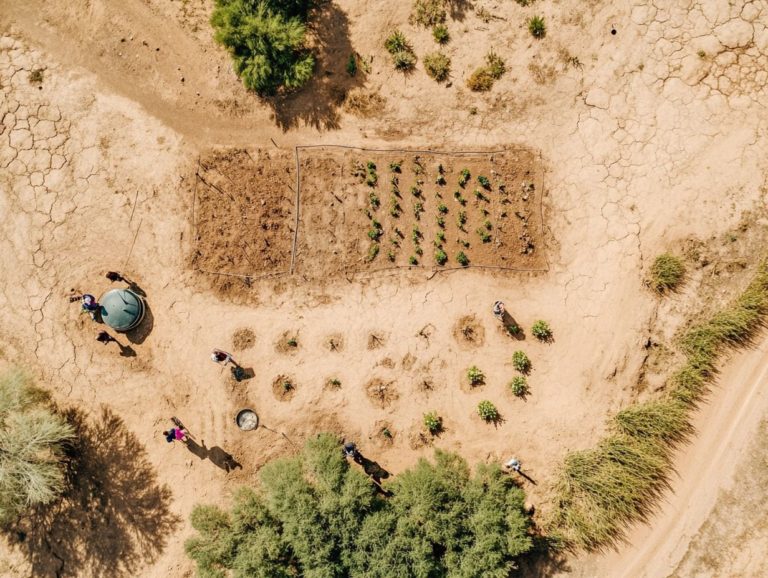Best Practices for Transplanting Drought Plants
Transplanting drought-resistant and drought-tolerant plants can be a rewarding endeavor for gardeners aiming to create sustainable landscapes.
Let s explore the unique characteristics and adaptations of drought plants. This will help you understand their watering needs right from the start. You ll learn about the best times to transplant, how to prepare your soil effectively, and step-by-step techniques for a successful transfer.
You ll also find essential aftercare tips and insights into common pitfalls to avoid. All this information is designed to help your drought plants flourish in their new environment while enhancing water conservation efforts.
Jump in and learn how to make your garden thrive!
Contents
- Key Takeaways:
- Understanding Drought Plants
- When to Transplant Drought Plants
- Preparing for Transplanting
- Transplanting Techniques
- Aftercare for Transplanted Drought Plants
- Avoid These Common Transplant Mistakes!
- Frequently Asked Questions
- What are the best practices for transplanting drought plants?
- When is the best time to transplant drought plants?
- How should I prepare the new planting location for transplanting?
- What should I do to properly care for drought plants before transplanting?
- How can I ensure successful transplanting of drought plants?
- What are some common mistakes to avoid when transplanting drought plants?
Key Takeaways:
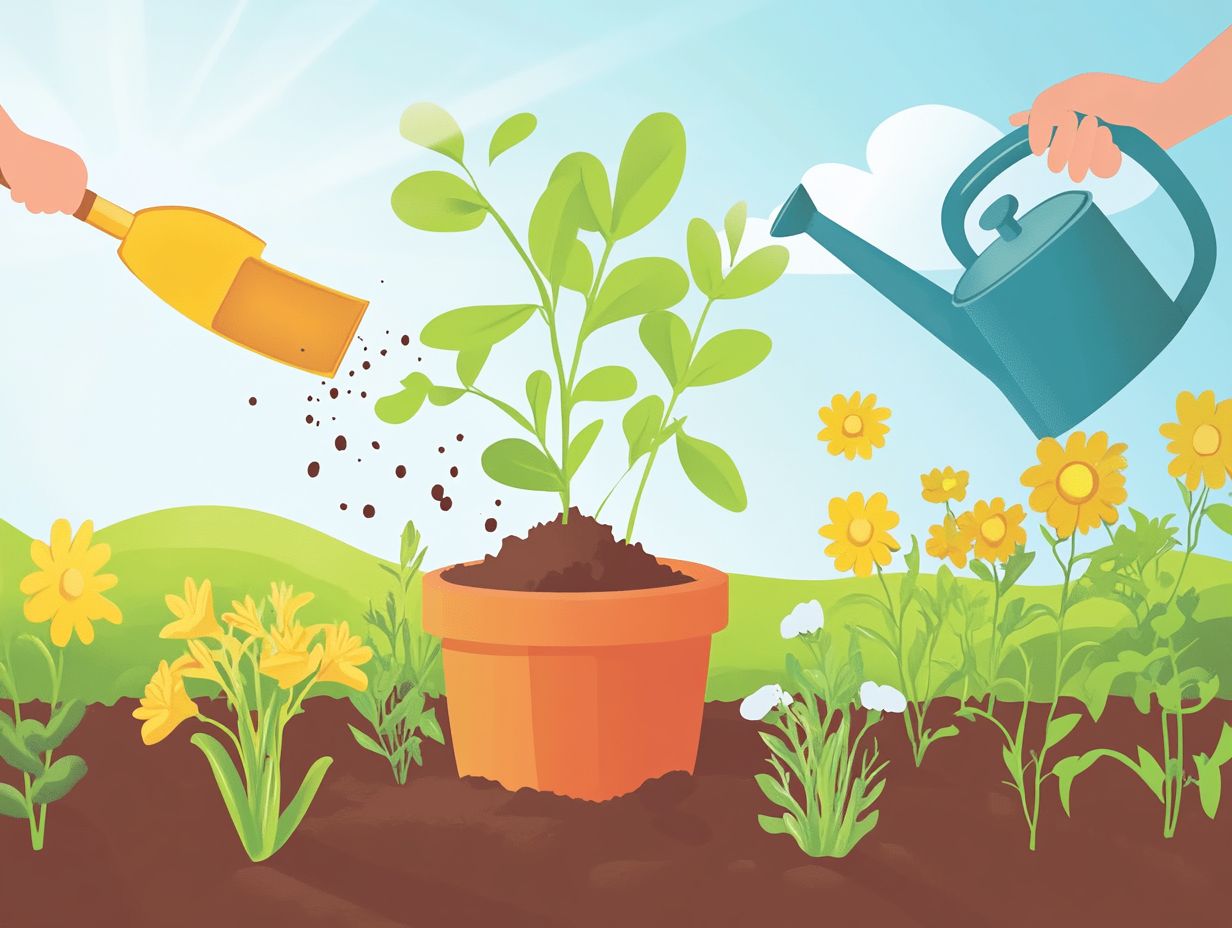
- Choose the right time to transplant drought plants for optimal survival.
- Proper preparation is essential, including using the right soil and watering techniques.
- Care for your plants during and after transplantation, following guidelines and providing adequate water and maintenance.
Understanding Drought Plants
Understanding drought-resistant plants is essential for your gardening success, especially in areas prone to water scarcity. These resilient species have developed adaptations that allow them to thrive with minimal water, making them vital for sustainable gardening practices.
By integrating drought-tolerant varieties, including native plants like native strawberries, into your landscape, you enhance biodiversity and promote effective water conservation.
Understanding the nuances of soil health and garden design, including aspects like drainage holes and raised beds, can elevate your growing conditions. This ensures that your plants establish and thrive beautifully.
Characteristics and Adaptations
Drought-tolerant plants possess distinctive characteristics and adaptations that enable them to thrive in arid conditions. These traits are essential for successful crop watering.
For instance, their deep root systems enhance moisture retention and reduce the need for frequent irrigation. These robust roots, combined with waxy leaves, help prevent excessive water loss. The waxy coating minimizes evaporation, allowing the plant to retain moisture even during dry spells.
Many drought-tolerant species have also evolved modified stomata, which are tiny openings on their leaves that help control water loss. These traits are essential for maintaining soil moisture levels, crucial for their survival.
By efficiently utilizing available water through effective watering strategies, drought-resistant flora thrive in challenging environments and contribute significantly to promoting ecological stability.
When to Transplant Drought Plants
Understanding the best time for transplanting drought-resistant plants is crucial for ensuring their successful establishment and growth. Additionally, knowing winter care for drought-resistant plants can further enhance their wellbeing. Typically, the ideal seasons for transplanting are early spring or summer, when conditions are favorable for plant development.
Optimal Timing for Transplanting
Choosing the optimal timing for transplanting drought-resistant plants requires considering their specific water needs and the risk of transplant shock. To minimize this shock, it’s best to tackle the task in the early morning, along with using essential pruning techniques for drought plants.
By observing local weather patterns, you can pinpoint the most suitable days for transplanting. For example, on cooler days with overcast skies, your plants will experience significantly less stress than they would on hot, sunny afternoons.
It s crucial to assess the type of plant you re transplanting, as different plants thrive under varying conditions. After the transplant, monitoring moisture levels becomes essential. A simple probe can help you gauge the soil’s dampness effectively.
Establishing a consistent watering schedule, particularly in the early morning, will ensure your plants remain hydrated. This helps them adapt to their new environment, thereby reducing the chances of plant transplant shock.
Preparing for Transplanting
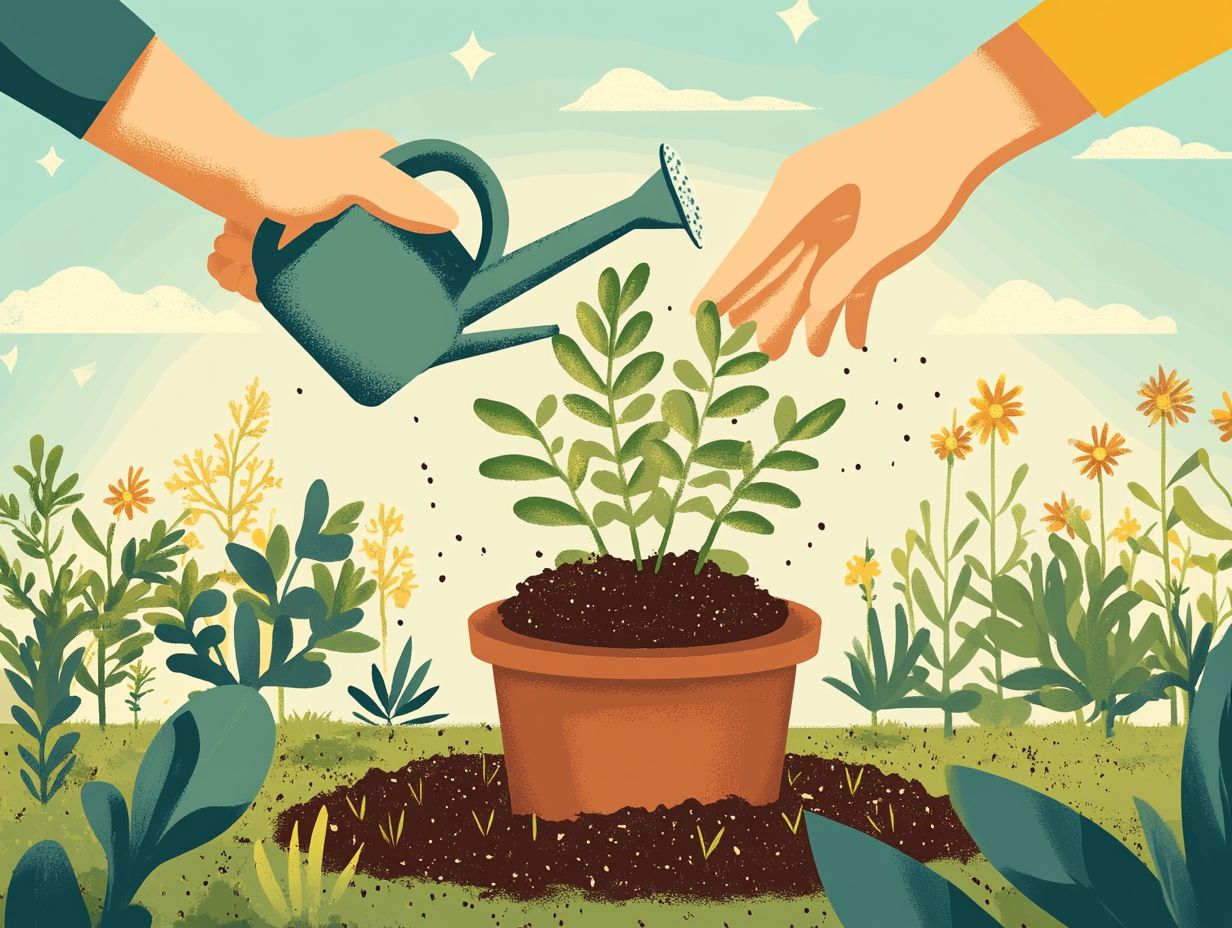
Preparing to transplant drought-resistant plants demands meticulous attention to soil preparation. This includes adding compost and employing strategic watering techniques. For more insights, check out these tips for maintaining plant health in drought. These steps ensure the conditions are just right for the successful establishment and growth of your plants.
Proper Soil and Watering Techniques
Utilizing proper soil and watering techniques is essential for ensuring that your drought-tolerant plants thrive, especially in clay soils. Adding compost or decayed leaves can significantly enhance soil health and moisture retention.
This method creates a rich environment for plant roots. It also boosts the soil’s ability to retain moisture during challenging weather conditions.
Adding materials like compost, well-rotted manure, or leaf litter improves soil structure. This allows for better aeration and water infiltration, which is vital for plant establishment.
It’s important to pay attention to irrigation frequency, especially when the weather turns dry. This helps maintain optimal plant growth.
Adopting a deep watering strategy where you water less frequently but thoroughly encourages roots to grow deeper, making your plants more resilient. Drip irrigation delivers water directly to the roots, while soaker hoses allow water to seep out slowly into the soil.
Regularly checking the soil moisture level will help you determine when it s time to water again. This ensures your plants receive the hydration they need to flourish.
Transplanting Techniques
Effective transplanting techniques are essential for the successful integration of drought-resistant plants into your garden. To enhance your success, explore planting strategies for drought conditions and consider factors like the root ball and proper planting methods, as these elements play a vital role in ensuring your garden thrives.
Step-by-Step Guide to Transplanting
A step-by-step guide to transplanting drought-tolerant plants requires you to follow specific transplant guidelines that cater to their unique watering needs. Additionally, incorporating techniques for propagating drought plants is important to highlight the significance of plant monitoring.
To cultivate a flourishing garden, choose the right time for transplanting, ideally during the cooler months or in the early morning hours.
Start by evaluating your soil conditions. Enhance them with organic matter to improve drainage and moisture retention.
Once you’ve mastered the timing and soil preparation, gently remove the plant from its original location. Take care not to disturb the root ball too much.
After you ve placed the plant in its new home, water it deeply but infrequently. This encourages robust root growth.
Post-transplant, your commitment to ongoing garden maintenance is vital. Regularly check moisture levels and protect against pests and diseases. This gives your plants the best chance for successful establishment.
Aftercare for Transplanted Drought Plants
Aftercare for your transplanted drought-tolerant plants is essential for their successful establishment. This involves implementing best practices for vertical drought gardening along with effective watering and maintenance techniques.
For example, apply a mulch layer to optimize water efficiency. This creates an ideal environment for your plants to thrive.
Watering and Maintenance Tips
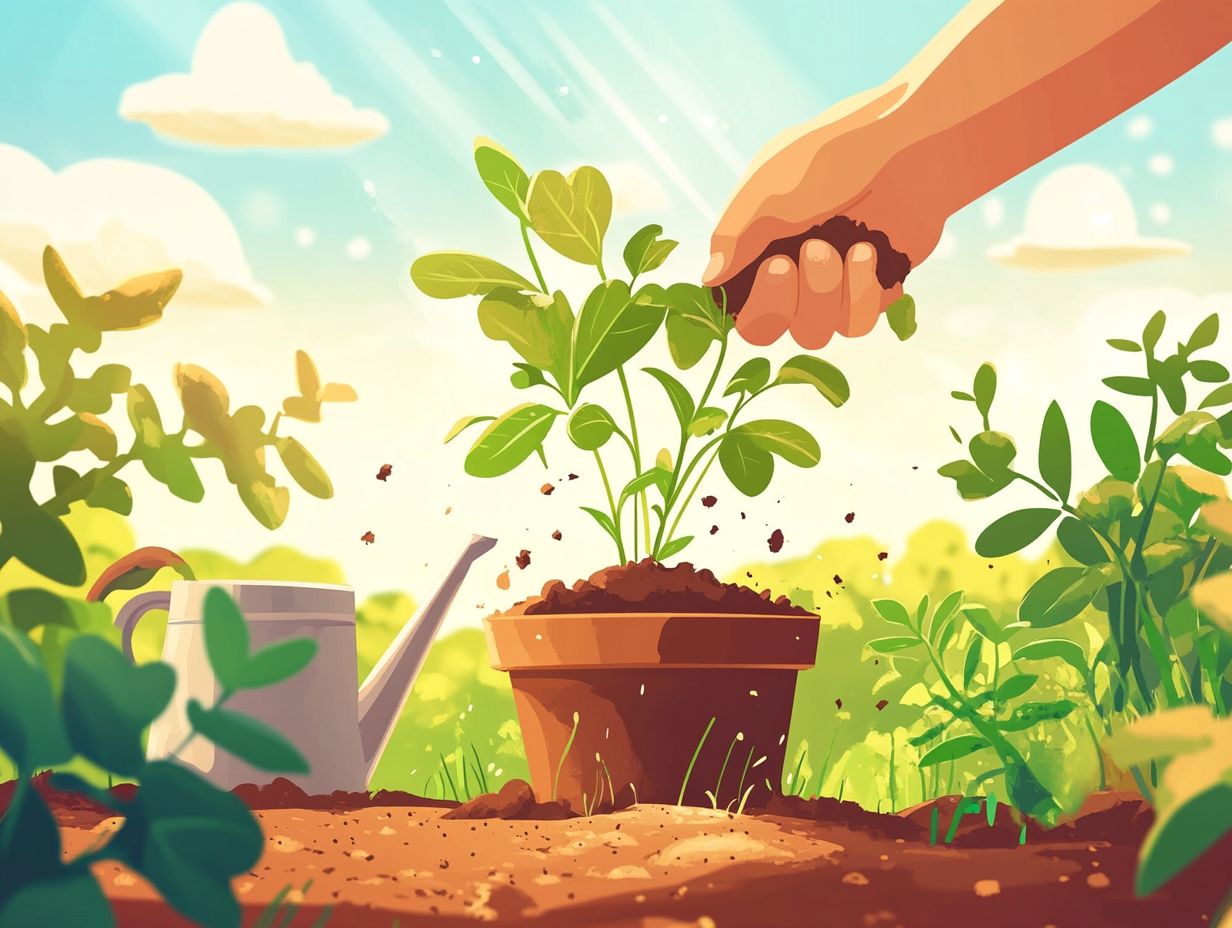
Establishing a consistent watering schedule is crucial for maintaining your transplanted drought-resistant plants. It’s equally important to provide them with adequate nutrients, such as liquid fish emulsion, and a layer of organic mulch to promote optimal growth.
When creating an effective watering schedule, consider the local climate, soil type, and the specific needs of your plants. Implementing a deep watering technique a couple of times a week encourages roots to dig deeper, enhancing their resilience during dry spells.
Regularly checking soil moisture levels will guide you on when to water. This will help you avoid the pitfalls of over- or under-watering.
Incorporating organic mulch around the base of your plants helps retain soil moisture. It also gradually enriches the soil as it decomposes, highlighting the mulch benefits.
This synergistic approach fosters healthy growth, especially in challenging drought conditions. Start your transplanting journey today and watch your garden flourish!
Avoid These Common Transplant Mistakes!
Avoid common pitfalls during transplanting. This is key to success.
Tips for a Successful Transplant
Use targeted tips for successful transplanting, as they can greatly improve the survival rate of drought-resistant plants. For more insights, explore the best practices for urban drought gardening.
Follow transplant guidelines and utilize available gardening resources. By tapping into detailed resources like online articles, instructional videos, or expert-led workshops from Oregon State University you can gain invaluable insights into the specific needs of each plant.
These resources often provide a wealth of best practices, covering everything from soil preparation and watering techniques to the perfect planting times.
Regularly check on your plants! This ensures they grow healthy and strong. Watch for growth patterns and signs of stress. Adjust your care as needed.
This attentive care not only creates a healthier environment for your plants to flourish but also deepens your connection to your green space, ultimately leading to a more rewarding gardening experience.
Frequently Asked Questions
What are the best practices for transplanting drought plants?
The best practices for transplanting drought plants include selecting the right time for transplanting, preparing the new planting location, and properly caring for the plant before and after transplanting, which is crucial for success. For further guidance, refer to the best practices for watering drought plants.
When is the best time to transplant drought plants?

The best time to transplant drought plants is during the cooler months of spring or fall when the plant is dormant and the weather is not too hot or dry.
How should I prepare the new planting location for transplanting?
Before transplanting, prepare the new location by digging a hole twice the size of the plant’s root ball. Loosen the soil and add organic matter to improve drainage.
What should I do to properly care for drought plants before transplanting?
Care for drought plants before transplanting by watering them deeply and frequently for a week or two beforehand. Additionally, it’s beneficial to follow essential tips for planting drought-tolerant species and trim back any damaged or overgrown branches.
How can I ensure successful transplanting of drought plants?
To ensure successful transplanting, avoid doing it during hot, dry weather. Water the plant deeply after transplanting, and provide temporary shade and protection from wind until it becomes established.
What are some common mistakes to avoid when transplanting drought plants?
Common mistakes to avoid include transplanting during hot, dry weather, disturbing the plant’s roots too much, and not providing enough water and protection after transplanting.
Share your transplanting success stories with us!


